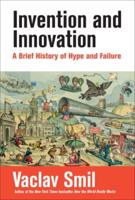Publisher's Synopsis
Excerpt from The Making of America, Vol. 6: Mining and Metallurgy
The geographical distribution oi our mineral resources could be fairly well shown in maps and charts, so far as ex ploration and development have revealed them. We might in that way show our assets, territorially distributed, but we would create a very erroneous opinion of their real value. With the most important minerals the economic value of a deposit is dependent upon many other considerations besides those of mere size and extent. Conspicuous among these are accessibility to markets, the means of transportation, natural or artificial, the existence of a supply of labor and the charu acter of that labor, climate, the character of the community, its laws, etc. These in their shifting in?uence find expression in the actual product, and that is a better measure of relative importance than mere location and extent.
The latter, designated on maps by coloring, is a poor guide since relatively unimportant deposits may cover a very extended territory. Coal measured may underlie many thou sands Oi square miles, yet the seams which they enclose may not be numerous nor thick nor possess a coal of satisfactory quality. A field small in area, at some distant place, may be the scene of enormous operations, while the greater basin may hardly be able to supply local requirements. The anthracite coal regions, as to area, constitute only an exceedingly small portion of the known coal fields of the United States, yet their importance overshadows any other industrial district.
About the Publisher
Forgotten Books publishes hundreds of thousands of rare and classic books. Find more at www.forgottenbooks.com
This book is a reproduction of an important historical work. Forgotten Books uses state-of-the-art technology to digitally reconstruct the work, preserving the original format whilst repairing imperfections present in the aged copy. In rare cases, an imperfection in the original, such as a blemish or missing page, may be replicated in our edition. We do, however, repair the vast majority of imperfections successfully; any imperfections that remain are intentionally left to preserve the state of such historical works.










